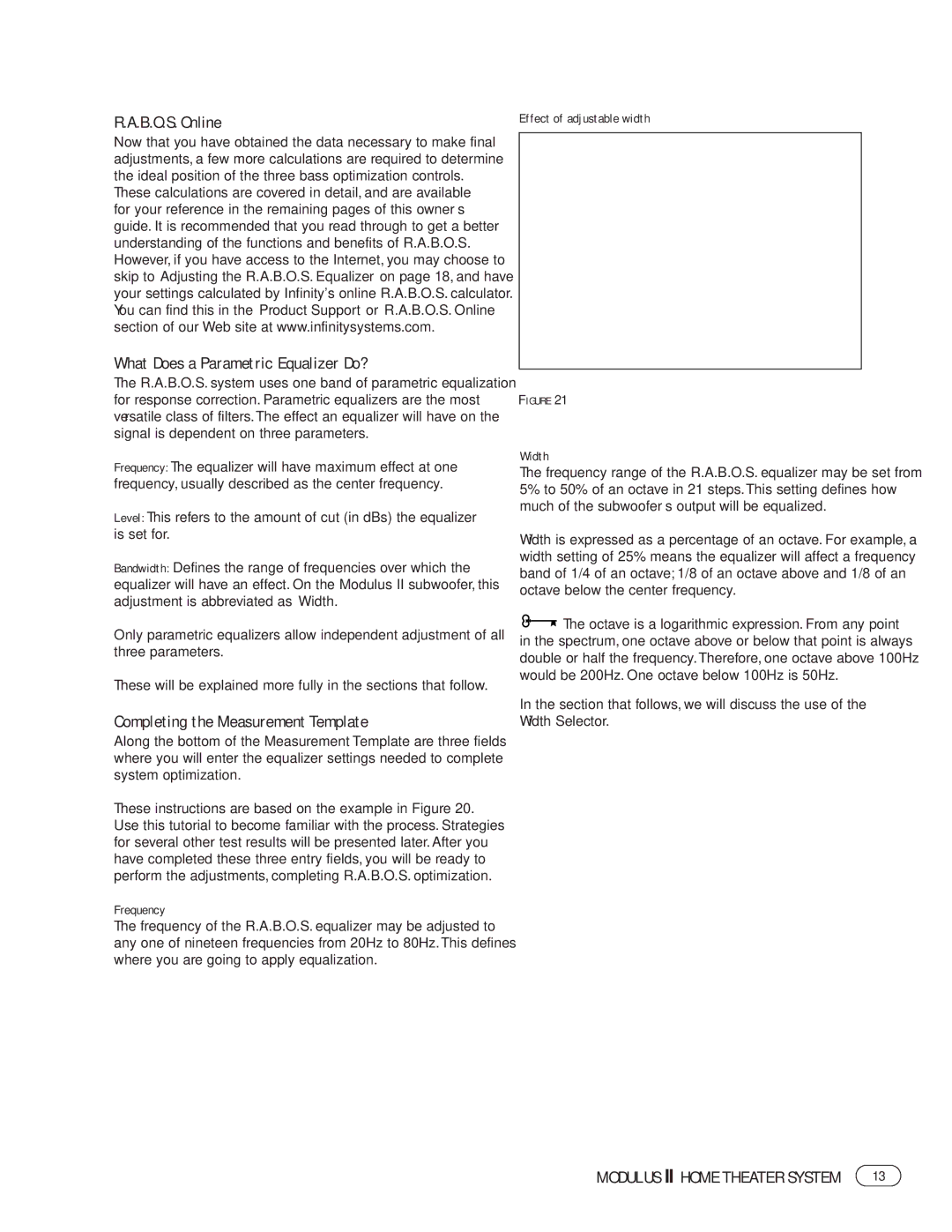
R.A.B.O.S. Online
Now that you have obtained the data necessary to make final adjustments, a few more calculations are required to determine the ideal position of the three bass optimization controls. These calculations are covered in detail, and are available for your reference in the remaining pages of this owner’s guide. It is recommended that you read through to get a better understanding of the functions and benefits of R.A.B.O.S. However, if you have access to the Internet, you may choose to skip to “Adjusting the R.A.B.O.S. Equalizer” on page 18, and have your settings calculated by Infinity's online R.A.B.O.S. calculator. You can find this in the “Product Support” or “R.A.B.O.S. Online” section of our Web site at www.infinitysystems.com.
What Does a Parametric Equalizer Do?
The R.A.B.O.S. system uses one band of parametric equalization for response correction. Parametric equalizers are the most versatile class of filters. The effect an equalizer will have on the signal is dependent on three parameters.
Frequency: The equalizer will have maximum effect at one frequency, usually described as the center frequency.
Level: This refers to the amount of cut (in dBs) the equalizer is set for.
Bandwidth: Defines the range of frequencies over which the equalizer will have an effect. On the Modulus II subwoofer, this adjustment is abbreviated as “Width.”
Only parametric equalizers allow independent adjustment of all three parameters.
These will be explained more fully in the sections that follow.
Completing the Measurement Template
Along the bottom of the Measurement Template are three fields where you will enter the equalizer settings needed to complete system optimization.
These instructions are based on the example in Figure 20.
Use this tutorial to become familiar with the process. Strategies for several other test results will be presented later. After you have completed these three entry fields, you will be ready to perform the adjustments, completing R.A.B.O.S. optimization.
Frequency
The frequency of the R.A.B.O.S. equalizer may be adjusted to any one of nineteen frequencies from 20Hz to 80Hz. This defines where you are going to apply equalization.
Effect of adjustable width
FIGURE 21
Width
The frequency range of the R.A.B.O.S. equalizer may be set from 5% to 50% of an octave in 21 steps. This setting defines how much of the subwoofer’s output will be equalized.
Width is expressed as a percentage of an octave. For example, a width setting of 25% means the equalizer will affect a frequency band of 1/4 of an octave; 1/8 of an octave above and 1/8 of an octave below the center frequency.
![]()
![]()
![]() The octave is a logarithmic expression. From any point in the spectrum, one octave above or below that point is always double or half the frequency. Therefore, one octave above 100Hz would be 200Hz. One octave below 100Hz is 50Hz.
The octave is a logarithmic expression. From any point in the spectrum, one octave above or below that point is always double or half the frequency. Therefore, one octave above 100Hz would be 200Hz. One octave below 100Hz is 50Hz.
In the section that follows, we will discuss the use of the Width Selector.
MODULUS II HOME THEATER SYSTEM | 13 |
